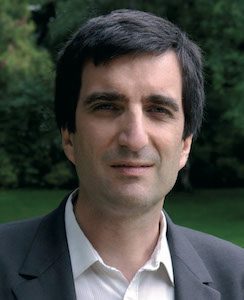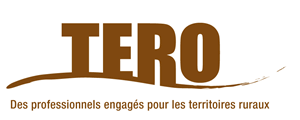From April 30 to May 2, 2012, Pierre Johnson and Eugénie Malandain went on an exploratory mission in the region of the argan forest near Agadir (Morocco).
Pierre Johnson participated in the roundtable organized in partnership with Rencontres Solidaires Nord-Sud entitled “What social responsibility in the argan oil supply chain”, by giving the public of the 2nd international conference on corporate social responsibility at Agadir an overview of the challenges of the industry. He then visited several argan oil cooperatives and a company of aromatic and medicinal plants, with local professionals.
The Argan forest (arganeraie) is a vast semi-desert region of southern Morocco, in which a particular ecosystem prevents desert encroachment, preserving a unique biodiversity.
The pillar of this ecosystem, which covers nearly one million hectares, is obviously the argan tree, which is endemic from the region, a tree from the Sapotaceae family whose roots go twice as deep as the tree grows in height. In addition to providing a protection to plant, the argan tree produces a fruit from which women from local communities have been extracting for centuries oil for food and cosmetic uses, an oil which properties have become appreciated in recent decades on the international market.
The argan forest is the cradle of cultural traditions (mostly “Berber”) and significant expertise. It is a region that is poor according to conventional indicators (low household income, low education with a high proportion of children completing only primary school), but rich in biocultural potential.
Since the late 1990s, production and commercialization of argan oil, whose properties had just been confirmed by a biologist from Rabat, Mrs Dr Charrouf, was seen as the heart of economic and social development of the region, primarily of women, human development levers.
What is the outcome of these actions, strongly supported by the European Union, bilateral agencies (GIZ) and some foundations? What lessons companies engaged in these industries get from their experience of this supply chain? Interviews and field visits allow us to begin to answer these questions through five major findings:
1. “Argan oil” supply chains in need for traceability and transparency
The extremely rapid development of markets for cosmetic argan oil since the mid-2000s caused a loss of control over the traceability and the quality of this oil in domestic (see below) and even in international markets. This “market failure” has many causes.
Absence of regulation and protection from the Moroccan authorities on national genetic resources is one important factor. Symptom of this failure: Pierre Fabre Laboratories registered the generic name “argan” as a trademark in 1983. In December 2010, the intervention of a small competitor led the Tribunal de Grande Instance de Paris to declare the invalidity of the trademark. However, there has been no complaints of a Moroccan party for nearly 30 years.
Transparency : A lack of support to women’s cooperatives that have driving the development of argan oil raises somes questions on these cooperatives and their federations. Their transparency and governance are often far from secured.
The environment in which they were developed explains partly the sitution, as indicators of access to education are very low in the region (see point 4). The result is that some women’s cooperatives are controlled by men, husband or brother of the President, or by a woman, but for the sole interest of her family, in contradiction with cooperative principles. This issue of transparency should not heap opprobrium on the many cooperatives that operate as correctly as possible.
Traceability: There are many operators who complain of the difficulty of finding pure argan oil. Very often, what they are offered by wholesalers or local retailers is cut with another edible odorless oil. This problem is less acute when the operator establishes a direct relationship with the producer group, but it testifies to the anarchic situation in the sector.
L’Oreal also made the finding of a failure of organic certification of argan oil. Certainly, a 100% argan oil is normally 100% organic, since no fertilizers or pesticides ara ever used for the tree, the only predator of the fruit being the goat. Thus, some organic inspection bodies are doing their job control superficially, just sending questionnaires to the leaders of cooperatives (evidence received at the roundtable). This lack of seriousness in control can result in a lack of certainty about the origin of the lots.
2. Local markets unregulated and failing
If the situation of international argan oil supply chains is worrying, by its lack of traceability, it is even more so for national supply chains. Argan oil was, until the 1990s, a commodity exchanged between women in the domestic sphere or in village markets. Undervalued economically, it was not the subject to fraud. Now that its value on international markets has increased tenfold in recent years, many local businesses are taking advantage of the absence of a control system to cut the oil with other cheaper oils.
The situation is catastrophic for markets linked to tourism such as Agadir or Marrakech, but it is nonetheless real in local markets. We were able to make the following observation: “argan oil” is offered in plastic bottles. There is no guarantee whether it is 100% argan oil. Moroccan consumers are without access to quality and traceability insurance, unless they buy an export product, at 30 or 50 euros per liter. But the Moroccan domestic market could be an interesting opportunity for organizations producing Moroccan.
With more moderate prices than international brands, a range of argan oil packaged in glass bottles (not plastic) and ensuring quality and traceability would be attractive to middle class and to national tourists visiting the souks. It might also be available on Moroccan immigrants in the city, willing to pay a slightly higher price for this oil with exceptional cosmetic and nutritional qualities.
3. Uncertain acknowledgement and future for traditional knowledge
Argan supply chains face other challenges, a ransom for their success. The lack of acknowledgement for the traditional knowledge preserved and developed by women of the region over the centuries has been mentioned above. Under the terms of the Convention on Biological Diversity (CBD), they should benefit not only from “fair trade”, on a voluntary from business and consumers, but also from “benefit sharing” for maintaining this genetic resource and developing knowledge on its uses. But since Morocco has not yet transposed CBD access and benefit sharing (ABS) into its legislation, this requirement is still not on the agenda.
Technical rationalization of the argan oil supply chain also poses some challenges, because its future impact on producers has not been evaluated. With the development of product chains, machines have replaced women for certain stages of production, including oil filtration. This technical evolution has streamlined some of the work, and save a labor. It gave the oil more stability, and reduced part of the labor costs.
Crushing was so far the main stage of the production process deemed not be mechanizable. It is at this stage that women find themselves in a common room, to work while exchanging news and conversation. However a crushing machine has been developed and four machines are being tested in the region. The development of this technology would certainly reduce the painfulness of work, but also simply reduce the amount of work available in rural areas.
This matter of social choice should be discussed between local and supply chain partners. Among the options: the distinction of several supply chains, depending on their level of mechanization, some savvy consumers preferring the traditional manual method of processing. An explanation of the different process of transformation for argan oil are available in French here.
4. Human development is not assured
The Moroccan authorities (Forestry) estimate that the argan forest currently provides 7 million workdays per year, and an income of 3600 dirhams per household per year, i.e. 25 to 45% of average annual income in rural areas. It therefore plays an undeniable role in society. Overall, however, in the rural area of the argan tree social policies in education and health were neglected (or their results did not reach the countryside). Migration of men to urban area is very important. Many villages are inhabited by a large majority of women and children, men being left to seek work in town, often in small trade-related jobs.
The very low literacy rate raises issues of organization and management, and thus of development to cooperatives (observation 2 above). More critical, because of the findings above, the impact of the development of “argan oil” production on the local socio-economic indicators is uncertain, and for some recent authors negligible compared to the previous situation.
Bruno Romagny, director of research at the Institut de Recherche pour le Développement, knowing the region, stated recently (2010):
“Thus the recent boom in argan production does not translate into significant reduction of poverty and enhancement of sustainable local development. Recent studies show that the economic impact of selling argan oil are very scarce for people of the region. ”
Nevertheless, the indicators do not reflect the general perception that women and men have of the local impact. The effect “organization” and “dignity” of developing this industry could be important for women, although it should also be realized in real socio-economic progress.
5. Diversification opportunities underutilized
Urban migration of men and issues raised by the impact of the development of the argan oil value chain shows the limits of the sector argan oil as a vehicle for local or even regional development. For 20 years, all the development programs based on the local ecosystem focused only on the fruit of the argan tree. But this ecosystem hosts or can host many other valuable species, useful for food or health.
Thus, we had the opportunity to visit a plantation of organic medicinal and aromatic plants near Agadir, le Jardin de Jacky, and see the diversity and quality of plants and species produced locally.
A meeting with an herbalist in Agadir gave us an insight on the magnitude of local customs, and the possibility to marry traditional knowledge and approaches with a contemporary approach to herbal medicine, provided they take into account the local culture. These plants are an opportunity to diversify production in the region, in addition to the argan oil production, for local or national use or marketing. They could be part of the response to the limits and current dilemmas of the argan industry. Many actions are to be undertaken to give reality to this perspective, but it has real local potential, at a very low investment cost.
Encouraging developments
In conclusion, if the situation of argan oil chains in southern Morocco is far from ideal, the potential exists locally for a readjustment of trade channels based on choices made with local actors, producers and entrepreneurs, and for an opening to the domestic market and crop diversification. In terms of resource protection, the decision of the Court of Paris on the brand Argane, as well as the establishment of an ABS group in Morocco, are encouraging news. Finally, the biological and cultural diversity of the region is not limited to the argan tree, and includes many other plants, whose properties and traditional knowledge it is possible to enhance on local markets, national and international.







